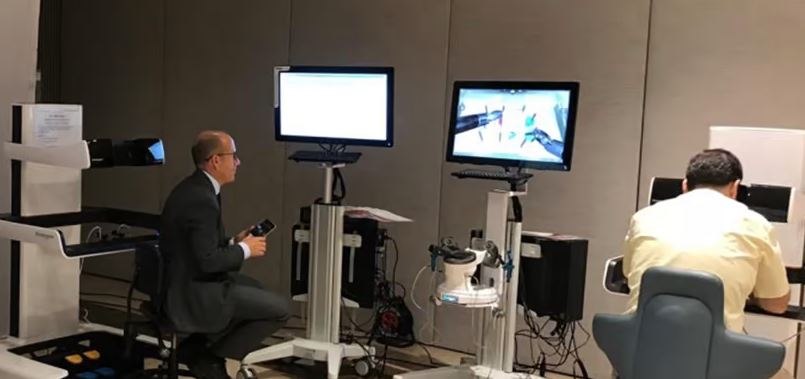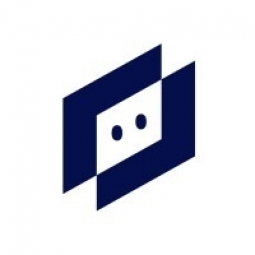Customer Company Size
Large Corporate
Region
- America
Country
- United States
Product
- LogicMonitor’s SaaS-based infrastructure performance monitoring platform
- LM Config
Tech Stack
- Juniper Network Switches
- Palo Alto Firewalls
- HPE/Aruba WLAN infrastructure
- VMWare ESX hosts
Implementation Scale
- Enterprise-wide Deployment
Impact Metrics
- Cost Savings
- Productivity Improvements
- Digital Expertise
Technology Category
- Platform as a Service (PaaS) - Connectivity Platforms
- Application Infrastructure & Middleware - API Integration & Management
Applicable Industries
- Education
Applicable Functions
- Facility Management
Use Cases
- Campus Area Network
- Remote Asset Management
- Remote Collaboration
Services
- Cloud Planning, Design & Implementation Services
- System Integration
About The Customer
Loyola University Maryland is a distinguished university founded nearly 170 years ago. The university has a rich tradition and is supported by next-gen technology. It has over 9,000 daily active users and includes 60 main campus buildings and three remote campus locations that include graduate program facilities and clinical centers. In 2011, the university implemented its 'Next-Gen Network', a complete network upgrade that required a significant change in architecture and increases in capacity and service-delivery capabilities. The upgrade resulted in greatly elevated network standards and a diverse technology portfolio that includes Juniper Network Switches and Palo Alto Firewalls, HPE/Aruba WLAN infrastructure, and VMWare ESX hosts.
The Challenge
Loyola University Maryland, a distinguished university with over 9,000 daily active users, needed a significant network upgrade in 2011. The upgrade, known as the 'Next-Gen Network', resulted in elevated network standards and a diverse technology portfolio. However, the sophistication of the new network made the insufficiencies of its incumbent monitoring system immediately obvious. The university's monitoring capabilities were comprised of a patchwork of different tools for each system, which meant that strategic actions like actionable analysis, evaluation, and optimization had to take a back seat. The team could be spending up to 75 percent of its time on overhead just to keep monitoring tools and related systems running. The organization needed more visibility into the university’s now highly sophisticated infrastructure and an ability to scale that infrastructure without adding management overhead.
The Solution
After considering multiple vendors, Loyola’s team chose LogicMonitor’s SaaS-based monitoring solution because it was able to provide full visibility into every device under Loyola’s management. The value and ROI to Loyola were immediate: LogicMonitor began collecting hundreds of thousands of data points within minutes of deployment. The monitoring platform provided Loyola with a streamlined, single-solution process that allowed for reduced time to resolution, improved operational performance, increased visibility, and decreased IT overhead and cost. With the addition of LM Config, LogicMonitor’s configuration monitoring and management solution, Loyola drastically reduced configuration overhead and time-to-resolution. The solution can automatically detect, monitor, alert on, and restore configuration files for a wide variety and number of devices.
Operational Impact
Quantitative Benefit

Case Study missing?
Start adding your own!
Register with your work email and create a new case study profile for your business.
Related Case Studies.

Case Study
Revolutionizing Medical Training in India: GSL Smart Lab and the LAP Mentor
The GSL SMART Lab, a collective effort of the GSL College of Medicine and the GSL College of Nursing and Health Science, was facing a challenge in providing superior training to healthcare professionals. As clinical medicine was becoming more focused on patient safety and quality of care, the need for medical simulation to bridge the educational gap between the classroom and the clinical environment was becoming increasingly apparent. Dr. Sandeep Ganni, the director of the GSL SMART Lab, envisioned a world-class surgical and medical training center where physicians and healthcare professionals could learn skills through simulation training. He was looking for different simulators for different specialties to provide both basic and advanced simulation training. For laparoscopic surgery, he was interested in a high fidelity simulator that could provide basic surgical and suturing skills training for international accreditation as well as specific hands-on training in complex laparoscopic procedures for practicing physicians in India.

Case Study
IoT platform Enables Safety Solutions for U.S. School Districts
Designed to alert drivers when schoolchildren are present, especially in low-visibility conditions, school-zone flasher signals are typically updated manually at each school. The switching is based on the school calendar and manually changed when an unexpected early dismissal occurs, as in the case of a weather-event altering the normal schedule. The process to reprogram the flashers requires a significant effort by school district personnel to implement due to the large number of warning flashers installed across an entire school district.

Case Study
Implementing Robotic Surgery Training Simulator for Enhanced Surgical Proficiency
Fundacio Puigvert, a leading European medical center specializing in Urology, Nephrology, and Andrology, faced a significant challenge in training its surgical residents. The institution recognized the need for a more standardized and comprehensive training curriculum, particularly in the area of robotic surgery. The challenge was underscored by two independent studies showing that less than 5% of residents in Italian and German residency programs could perform major or complex procedures by the end of their residency. The institution sought to establish a virtual reality simulation lab that would include endourological, laparoscopic, and robotic platforms. However, they needed a simulator that could replicate both the hardware and software of the robotic Da Vinci console used in the operating room, without being connected to the actual physical console. They also required a system that could provide both basic and advanced simulation training, and a metrics system to assess the proficiency of the trainees before they performed surgical procedures in the operating theater.

Case Study
Edinburgh Napier University streamlines long-distance learning with Cisco WebEX
• Geographically dispersed campus made in-person meetings costly and inconvenient.• Distance-learning programs in Malaysia, India, and China required dependable, user-friendly online tools to maximize interaction in collaborative workspaces.• Virtual learning environment required a separate sign-in process, resulting in a significant administrative burden for IT staff and limited adoption of collaboration technology.

Case Study
8x increased productivity with VKS
Before VKS, a teacher would spend a lot of time showing a group of 22 students how to build a set of stairs within a semester of 120 hours. Along with not leaving the teacher much time to provide one-on-one support for each student to properly learn carpentry, it also left a considerable amount of room for error. Key information would be misinterpreted or lost as the class was taught in the typical show-and-tell way.

Case Study
Scalable IoT Empowering GreenFlex's Sustainable Growth
GreenFlex, a company that supports sustainable development, decarbonization, and energy efficiency, faced several challenges in its quest to expand its business. The company needed to deploy a robust and sustainable IoT technology to support its growth. It was crucial for them to monitor and control devices at customer sites in a safe and reliable manner. They also needed to integrate devices across a range of communication protocols and gather and act on data to meet efficiency targets. GreenFlex had previously built IoT capabilities into its digital platform, GreenFlexIQ, to monitor and manage customer sites remotely. However, they soon realized that they needed a new platform to support their ambitions. They needed a platform that could scale to connect more devices for production management and make it easier for the operations team to manage devices in the field.







